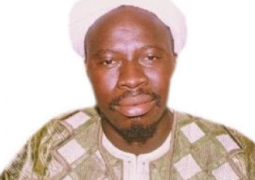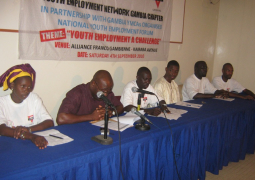
The Minister of Health and Social Welfare, Hon Omar Sey, Thursday presided over a day dissemination workshop on the Gambia survey of Tuberculosis Prevalence (GAMSTEP) results finding, at the Kairaba Beach Hotel.
The survey was conducted by the Medical Research Council (MRC) the Gambia on behalf of the Ministry of Health and Social Welfare on tuberculosis prevalence, implication of the TB program and future TB control efforts in The Gambia.
The dissemination stakeholder forum was organised by MRC in collaboration with the Ministry of Health and Social Welfare and the National Leprosy and TB Control Programme.
The workshop aimed at providing opportunity for the participants to discuss issues around the implication for the TB programme and future TB control activities in The Gambia.
Speaking at the meeting, Professor Umberto Dalesandro, Unit Director of MRC, said the successful completion of the first nationwide Gambian survey of TB prevalence (GAMSTEP) is one of the numerous signs of the good collaborative relationships between MRC and the Government of The Gambia, especially MOHSW, the National Leprosy and TB program and other partners.
“Such collaboration is in line with the unit vision of leading research with potential of direct impact on quality of life and health in The Gambia and beyond,” he said.
According to him, the survey funded by the GF with significant investment of financial and human resources by the MRC, was a priority for the unit as part of its research activities in disease control and elimination.
He further stated that the MRC shares the vision of the MOHSW in aiming at reducing TB to levels where it ceases to be public health concern in The Gambia.
The MRC was committed to quality research to generate evidence for successful interventions that could be deployed to achieve this vision in The Gambia as a case study in the sub-region and the continent at large.
Musa B. Jallow, deputy programme manager, National Leprosy Tuberculosis Program (NLTP), highlighted the importance of the occasion, which he said marked the launching of the nationwide Tuberculosis Prevalence survey report.
The survey had unveiled the real burden of tuberculosis disease in The Gambia which they had long been yearning for, he said, adding that the Ministry of Health and Social Welfare had over the years made significant progress in the fight against TB in The Gambia.
The number of new smear positive TB cases diagnosed had increased from 1306 in 2008 to 1431 cases in 2013 and the treatment success rate of 88 per cent exceeded the WHO target of at least 85 per cent, he said.
The defaulter rate declined from 14 per cent in 2005 to 3 per cent in 2012, he added.
He said based on the GAMSTEP findings, the ministry would continue to collaborate with its partners in the implementation of the programme with greater focus on the densely populated Greater Banjul Area.
The ministry would strengthen capacity of healthcare workers including medical doctors in TB cases detection, particularly screening of high risks groups such as people living with HIV/AIDS, children and contacts of infectious TB cases, he said.
Speaking on the occasion, the Health and Social Welfare Minister, Omar Sey, thanked the Medical Research Council - The Gambia and the National Tuberculosis’ and Leprosy Control Programme of the Ministry of Health and Social Welfare for implementing the first national tuberculosis prevalence survey in The Gambia.
He said that in 1985, The Gambia was among the first countries in the world to use Direct Observed Treatment Short course to treat tuberculosis.
This strategy was very successful, which prompted the WHO to roll it out and to be used in all countries by the year 1986, he added.
He said that since the establishment of the joint National Tuberculosis’ and Leprosy Control Program in 1984, the Ministry of Health and Social Welfare had been increasing and improving health services provided to tuberculosis patients in the country, hence it had been able to achieve the use of direct observed treatment short course to treat tuberculosis, and was being used countrywide from 1985 to date.



